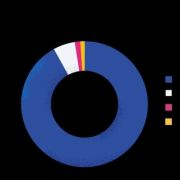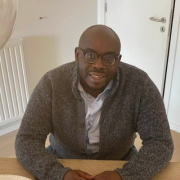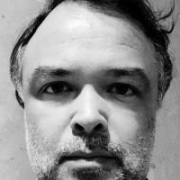What is our primary use case?
The solution can be used on everything. It can be used on the cloud. You can also use it for on-premises devices, from servers to laptops. It's a pretty good solution to manage devices and servers.
Usually, our clients have an on-premises infrastructure and they want to start working in the cloud, especially in Azure. We use Microsoft Defender to manage on-premises devices from Azure. Especially over the last two years, a lot of companies have wanted to focus more on their own business and that's why they have us manage their IT security.
The main goal of using Defender for our clients is to do vulnerability scanning and to be aware of any possible security breaches in their infrastructure.
How has it helped my organization?
Microsoft Defender is totally integrated with Microsoft 365 Azure. For example, years ago a software company that was working on-premises with Microsoft products came to us. They asked us to help them connect to Azure because with Azure, they could, of course, run their core business, but it would also help them create more value in the market. Microsoft Defender is the best way to manage on-premises devices, but also devices on the cloud.
It also helps us to prioritize threats.
In addition, the solution gives us a single dashboard that we can customize. When our security operators start their day, they look at the dashboard information. If there is a big issue, they automatically get the information. They can send an email to the team involved. The dashboard helps the security team, day-to-day, to ensure everything is secure for the client. The dashboard is really important.
And overall, the solution has saved us 50 percent of our time. It also saves us money because it prevents ransomware and web application attacks every day. Currently, with the war in Ukraine, because I work in Europe, hackers are trying to hack into enterprises, and that's another reason it's really important to have this kind of solution.
It may be saving us 30 percent, in terms of money, because once you have the system in place, you can avoid a lot of attacks and keep secret information away from hackers. When we talk about security, we're also talking about the reputation of the company. Using this kind of solution helps our clients not to lose money through a loss of reputation.
In terms of time to respond, someone who is working every day on the security operation team, can respond correctly within five minutes, to be conservative, to a problem they receive from the scanning done by Defender. It has decreased that time by about 20 percent, although keep in mind that I am a security architect and not part of the operations team.
What is most valuable?
The scanning part is one of the most valuable features with the automation of vulnerability scanning. That's why we use Defender. It gives us a lot of information on how to improve security.
There are some competitive products on the market, but the best is Microsoft Defender because it's very easy to integrate. That's one reason a lot of clients want Microsoft Defender.
It's also very easy to implement compared to other solutions.
Regarding other Microsoft solutions, about half of our clients take Sentinel, while 90 percent take Defender. They are very easy to integrate. That's one of the reasons, for me, that Microsoft is the best on the market. And in reviews about the best tools on the market, everybody agrees that Sentinel is the best on the market in the security area. When you work with Sentinel, it's easy to work with the Microsoft suite of products. It's easy to integrate every product from Microsoft.
We also use Microsoft Defender for Cloud's bidirectional sync capabilities. For security, they allow us to get all the information we need on time.
What needs improvement?
After scanning, there are false positives so sometimes you need to manage the results.
Also, we would like to see more tools for managing on-premises security. A lot of companies have their own on-premises infrastructure and want to move to the cloud. Sometimes, we have the tools, like Defender, to manage security in the cloud, but because we are so focused on the cloud, we forget the fact that we need to be sure about the security of the on-premises environment, specifically Active Directory. I know it's tricky, but I'd like to see them add some tools for a really good dashboard to introduce the fact that we also need to be careful about on-premises.
A lot of companies have their Active Directory on an on-premises physical server. When they start the journey of moving to the cloud, especially to Azure, they use Microsoft Defender to do device management, especially servers and computers. But to improve security monitoring it would help if we could monitor on-premises, especially identity. Usually, when hackers hack into an environment, they use tools to get the identity of a person. If we had tools to integrate with Defender, it would help improve security.
For how long have I used the solution?
I have been working with Microsoft Defender for two years.
What do I think about the stability of the solution?
What do I think about the scalability of the solution?
It's also a scalable solution.
About 90 percent of our clients have deployments in multiple locations because they are usually multi-national, and that's why it sometimes takes more time to do the implementation.
How are customer service and support?
The technical support of Microsoft is good.
How would you rate customer service and support?
Which solution did I use previously and why did I switch?
I have always used Microsoft solutions.
How was the initial setup?
The deployment is straightforward. The amount of time it takes depends on the configuration the client wants, but it's easy enough to deploy.
If we need to implement it for a client with 2,000 devices, it takes more time. Just the implementation, for me, takes 20 minutes, but after that we have to implement configuration on the cloud, and that is totally different.
If it's a big company, it could take three months, because we have to do discovery. We have a lot of clients that use customized containers and customized Linux servers, and that's where we have to be sure we do the implementation the right way.
Which other solutions did I evaluate?
Usually, when working with clients and proposing different solutions, they prefer to work with Microsoft Defender because it is integrated. And when you talk about the price, it's really perfect, compared to other advanced threat-scanning products on the market. Overall, 90 percent choose Microsoft Defender because it's great and very easy to put in place. You don't need to install an extra service or do a big design. You pay for the licenses and that's it.
What other advice do I have?
If you're considering working with Microsoft Defender, the first thing you need to do is an inventory of the infrastructure. We need to know what the client has: how many Windows Servers, how many Linux servers, and how much content. And then you need to know what you want to do with the devices. Some devices are not supported anymore. We need to know which devices the client wants to be covered by Defender.
A lot of times, we want to work with Sentinel because it's the best on the market. But Sentinel is more tricky to put that in place. But when you advise a client on security, of course, you propose a lot of solutions, including Defender and Sentinel. You propose the best on the market to improve their security.
Usually, they go for Microsoft Defender, but for Sentinel, sometimes it takes time. They say to us, "We don't have the money right now, let's wait two years." On many of my projects, my clients have already worked in the cloud and they want to start working with Azure. That's why Microsoft Defender is a good tool to implement. There are times we advise the client about Sentinel but they already have a SIEM solution like Splunk.
Defender for Endpoint does not help us automate routine tasks right now because it's extra work. I know we could put that in place, but often, when we start working with a client in the cloud, we spend a lot of money on that. I know, in the day-to-day operations of the security teams of our clients, they have so much to do and it would be really good to implement automation. We propose it to our clients, but it's up to them to decide if they want to do it.
The threat intelligence can help prepare for potential threats before they hit, but this is also something we need to talk to the client about. Sometimes, it's not in our hands. We can propose things to the client, but they have to choose. So far, after proposing these kinds of things to clients, I haven't received their agreement. This part of the solution is really interesting, but it can also be expensive for some clients. It depends on their budget.
And in terms of using multiple vendors for security or a single-vendor security suite, in my current company, we generally advise our clients to have different vendors, but it depends on the client. I, myself, am not a risky guy. But a lot of our clients have Microsoft products, and we'll advise them to use Microsoft products. You don't want to go to war with your client.
Sometimes, they want to work with a lot of different products, but when you try to do that it can be really expensive because you need to work on the connections between them. I usually advise Microsoft because it's very easy and a lot of clients already have Windows Servers, et cetera. It really depends on each case. It depends on who is paying, who is asking, and what they want.
Disclosure: My company has a business relationship with this vendor other than being a customer. Partner
















